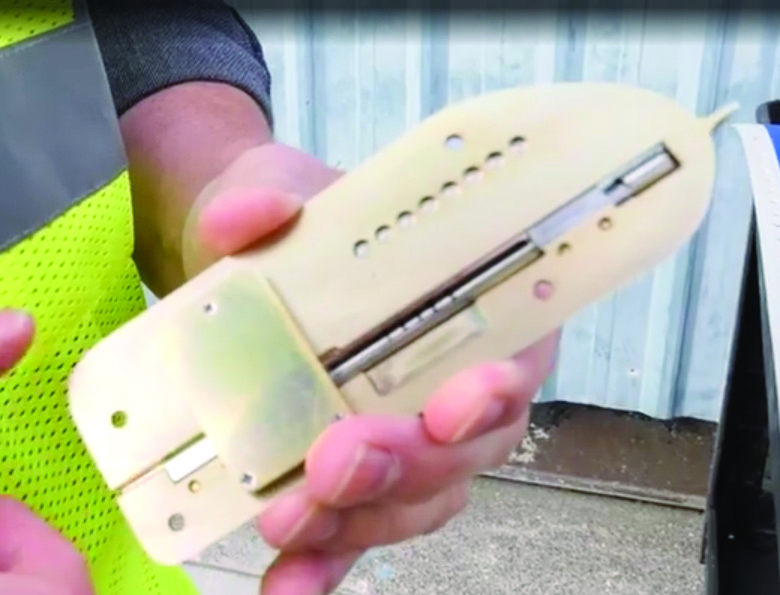Stay Up to Date
Submit your email address to receive the latest industry and Aerospace America news.
Vortex generators, or VGs, the tabs often fixed to the leading edge of aircraft wings, play a critical role during takeoff and landing, improving control and reducing stall speeds. But at cruise, they do little more than add drag.
NASA’s Glenn Research Center in Ohio and Boeing may have a solution: VGs that lie flat during cruise and stand vertically for takeoff and landing. The key is a unique SMA, short for shape memory alloy, developed at Glenn that doubles as a sensor and an actuator.
Typically, SMAs change shape when heated. This SMA, a blend of nickel, titanium, hafnium and zirconium, does the exact opposite; it changes shape when cooled. The SMA is formed into a rod about .25 centimeter in diameter, and placed along the base of the VG, where it acts like a hinge.
As an aircraft climbs toward its cruising altitude, the air temperature drops and the SMA twists, causing the VG to rotate and lie flush with the wing. As the aircraft descends, the air temperature increases. That causes the SMA to twist back, and the VG rotates to its vertical position.
In November, NASA and Boeing conducted the first flight tests of what they’re calling Shape Memory Alloy Reconfigurable Technology Vortex Generators, or Smart VGs. They swapped three standard VGs on a wing of Boeing’s 777-200 ecoDemonstrator aircraft with Smart VGs.
By the time the ecoDemonstrator reached cruise at about 40,000 feet, the atmospheric temperature had cooled enough, between minus 20 degrees Celsius and minus 60, to activate the SMA, which caused the Smart VGs to lie flat on the wing. As the ecoDemonstrator descended into warmer temperatures, above 0 degrees Celsius and around 15,000 feet, the SMART VGs began to deploy and stand back up.
“There’s no application of heat, there’s no batteries, there’s no power supply to the vortex generators,” says Othmane Benafan, Glenn’s lead engineer on the project. “The environment is doing the trick, and it’s doing it by cooling them.”
The Smart VGs could reduce drag on commercial aircraft by 0.2 to 0.5 percent, Boeing and NASA predict. “Over years, over the fleet, that translates to a huge number,” says Benafan. If the Smart VGs were used on 100 Boeing 777s, over the course of a year, they could save 3 million gallons (11.4 million liters) of fuel, the equivalent of removing 3,800 cars from the road for one year, Boeing estimates.
“We’re preparing this technology so it could potentially be used for new airplanes and it could be retrofittable for older airplanes,” says F. Tad Calkins, a Boeing associate technical fellow.
For now, this is purely a research effort. Boeing will use data from the ecoDemonstrator test flights, which wrapped up in late December, to chronicle how the Smart VGs react to different flight conditions and determine if they meet design requirements. Boeing says it is still too difficult to predict when these might arrive on any of its aircraft.
“These do show promise, so I think NASA and Boeing would be optimistic that perhaps one day they will find their way onto an airplane,” says Boeing spokesman Paul McElroy.
About Christine Fisher
Related Posts
Stay Up to Date
Submit your email address to receive the latest industry and Aerospace America news.





